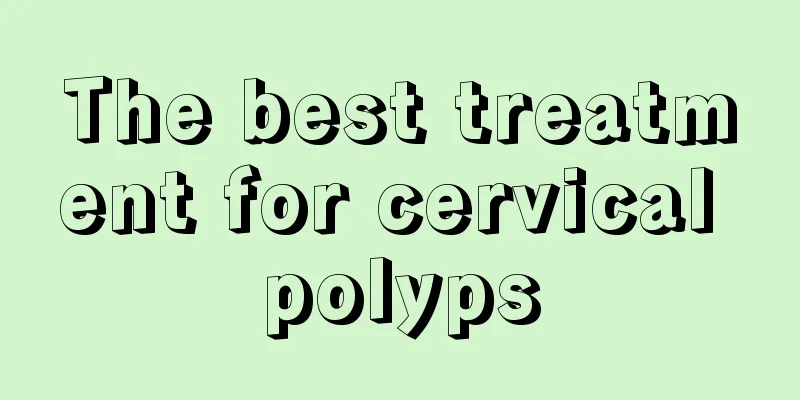How to treat fallopian tube obstruction? Drugs and surgery are the most common

|
Generally, fallopian tube blockage is caused by inflammation, especially gynecological inflammation. Fallopian tube blockage is a common cause of infertility. It can be treated with medication or surgery. The most important thing is to prevent fallopian tube blockage. 1. How to treat fallopian tube obstruction 1. Drug treatment The salpingitis that causes tubal obstruction and infertility is mainly a chronic inflammation, so it is mostly treated with medication, especially traditional Chinese medicine prescriptions for regulating menstruation and promoting ovulation, with excellent efficacy. 2. Surgical treatment (1) Fallopian tube insufflation: It can be performed 3 days after the menstruation ends. Dissolve 160,000 units of gentamicin, 2 ml of 2% procaine, 5 mg of dexamethasone, and 5 mg of α-chymotrypsin in 20 ml of normal saline and inject into the uterine cavity through the fallopian tube catheter. Take once every other day and stop treatment before ovulation. Continuous treatment can be performed for 2 to 3 menstrual cycles. This therapy is still used by most medical institutions, but it has poor efficacy and a high false positive rate. (2) Conventional surgical treatment: salpingostomy, adhesion separation, fallopian tube anastomosis, hysterosalpingography, etc. Conventional surgery requires large incisions and slow recovery after surgery. 2. Disease Prevention (1) Pay attention to the cleanliness and hygiene of the reproductive system. The most important thing is to prevent infection by various pathogens (especially sexually transmitted diseases). During artificial abortion, delivery, removal and placement of intrauterine contraceptive devices, and other uterine cavity surgeries, strict disinfection should be carried out to avoid inappropriate uterine cavity operations, unclean sexual life, sexual intercourse during menstruation, and repeated fallopian tube insufflation. (2) Actively treat pulmonary tuberculosis and lymph node tuberculosis to prevent infection with pelvic tuberculosis. (3) Once a woman suffers from an adnexal disease, she should follow the treatment principles, take a positive attitude, seek thorough treatment, and control the disease as quickly as possible to prevent it from becoming chronic. (4) Strengthen exercise to enhance disease resistance. |
<<: What should I do if I have vaginal itching during late pregnancy?
>>: The harm of high prolactin, these changes in the body have a great impact
Recommend
Comic: "Silent Killer" - Hepatitis C
Reviewer: Tang Bo, PhD in Molecular Biology, Chin...
Why do ophthalmologists wear glasses but don’t perform myopia surgery?
When you see an ophthalmologist wearing glasses Y...
How many days after medical abortion can I do an ultrasound?
In daily life, the more common methods of termina...
What is the fastest breast enlargement secret?
I believe that breast enhancement is a topic that...
Is it necessary to cut up and throw away the mask? How to avoid the secondary use of masks?
Is it necessary to cut up masks and throw them aw...
Why is my period so short?
Even men have some understanding of women's m...
Symptoms of early pregnancy after 10 days of amenorrhea
Many women experience early pregnancy 10 days aft...
Can a pregnancy test paper give a false positive?
Using early pregnancy test strips to check whethe...
How to calculate underwear size?
When we buy underwear for the first time, we will...
The body accumulates mutations throughout life. Could this be the cause of aging?
Imagine your body, a mosaic of cells with thousan...
Is an ovarian cyst malignant or benign?
I believe everyone knows the importance of ovarie...
Are born bad kids caused by super male syndrome?
Recently, a fetus in Sichuan was found to be a ch...
Do I need to take estrogen supplements after menopause?
Women generally no longer have vaginal bleeding a...
What is the matter with the black spots on the leaves of Molan? How to deal with the black spots on the leaves of Molan?
As people's quality of life improves, more an...
What is the cause of pain on both sides of the lower abdomen?
Lower abdominal pain is a relatively common sympt...









